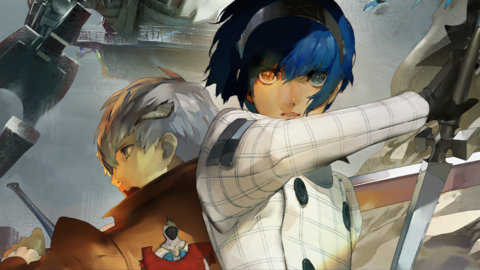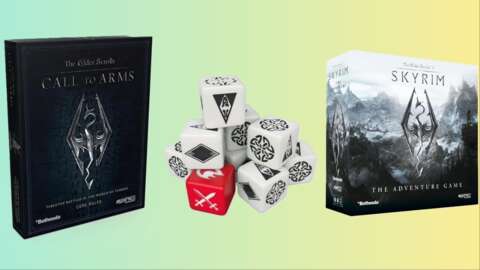Following the success of Persona 5, game director Katsura Hashino sensed he and the series were going in different directions. Rather than follow the series’ trajectory to, presumably, another place of higher learning, Hashino rallied forth a team intent on venturing into a new genre: high fantasy.
Enter Metaphor: ReFantazio, a new IP being developed by a new branch of Atlus, Studio Zero. Yet despite working under a new name–and the desire to pivot away from Persona–my time with Metaphor: ReFantazio reassured me that the game will be familiar and every bit as stylish as the critically acclaimed RPG series. Even more importantly, however, it also proved to me that the team’s new IP will usher forth a new era for Atlus–one filled with the spirit of adventure and perhaps even more focus on the human condition.
The portion of the game I played at Summer Game Fest 2024 was divided into three sections: one focused on the game’s archetype system, one focused on the game’s dungeoneering (which Hashino told me will play a much bigger role than Persona dungeons), and a final chapter showcasing a boss battle.
I kicked off my time with the demo with the archetype portion of the game, which takes place extremely early on. But while the focus of this chapter was on the game’s archetype system, the first thing I noticed were its characters. There are no humans in Metaphor: ReFantazio. Instead, the cast and the world they inhabit is made up of faeries, elves, tiefling-like beings, and other fantastical characters. Additionally, our hero–the Traveling Boy–is a voiced protagonist, a fairly novel thing for Atlus. That said, he still remains more of an everyman who follows the guidance of his pixie-like companion, Gallica, who is thankfully already far less grating than Teddy or Mona.
A few of the game’s characters stand together.
After a short cutscene revealing some of the game’s narrative setup and that the biggest threat to this world are “humans,” which more closely resemble biblically accurate angels, I was free to wander around and engage in a few battles where the archetype system was revealed to me.
Whereas it would be easy to dismiss archetypes as extremely similar to personas–and in some respects, they are–the system itself is more similar to a job system found in Bravely Default, Final Fantasy Tactics, or perhaps most accurately, Final Fantasy X-2. Your characters are able to switch between various archetypes, such as warrior, mage, brawler, and thief, via the main menu. This will then grant them different abilities and moves they can use with their companions called Synergy abilities. Archetypes can also be improved upon via a spherical grid-esque menu, allowing you to tweak your characters to your play style.
I got an even better look at how combat plays out in the demo’s dungeon portion, which takes players through a monster-filled fortress. Though Metaphor primarily uses turn-based combat similar to Persona and Shin Megami Tensei (though I’d say difficulty seems more comparable to the former), it also adds a small bit of fast-paced action, as well. While venturing through a dungeon, you can briefly hack and slash at wandering enemies, either weakening them prior to turn-based battle or killing them on the spot.
According to Hashino, dungeons will play a major role in Metaphor: ReFantazio. But don’t expect to see all of them in one playthrough. Compared to the more-linear timelines found in Persona, Metaphor offers a bit more freedom at the cost of having to make hard choices and not only how you spend your time, but where.
“Imagine if you go on vacation,” Hashino explained. “You go to a city and you have 10 places listed on your travel log. Some of these might take two days to enjoy, whereas others might take half a day. Some might require a guide or more preparations, others might be a bit more safe. But you can’t do it all.
“In this game, you travel a lot, and when you get to your destinations, you have a choice of multiple dungeons you can do. And all these dungeons have different difficulty levels as well, so it’s kind of up to you on how you choose to spend your time. In this way, there’s a lot more freedom.”
The game’s main story, however, remains fixed, and will presumably center the same antagonists–one of whom I got to fight in the next portion of the demo.
The team encounters Homo Sabara.
In the boss-battle portion of the demo, I teamed up with three of my companions to take on a grotesque sea creature called Sea Horror Homo Sabara. The tentacled-being was a challenge, as many of Atlus’ bosses are. An ability called Soul Scream gave him five turns in a row, which he used quite effectively, killing two of my party members and very nearly wiping my entire team. Yet despite this–and his regenerating limbs–I was able to take him down just before the demo’s 15 minutes ran out. My big takeaway is that party management, exploring weaknesses, buffs, and debuffs remain important in Metaphor, a fact that is not all that surpassing given the team’s history.
I also was able to explore the Gauntlet Runner, the caravan-esque vehicle the party both travels and lodges in. There, the protagonist is free to chat and ultimately bond with his teammates via raising their social links, or focus on honing his own skills. I asked Hashino why the team decided to make the Gauntlet both a mode of transportation and the party’s home–why couldn’t they simply stay at inns or camp outdoors? Hashino then told me this choice was actually quite integral to the game.
“The thing that we wanted to make sure was new [for Metaphor: ReFantzaio] specifically was that feeling of journey,” Hashino said.
Hashino added that “so much goes into RPGs,” such as new locations, traveling, and new cultures. Having a constant base of operations and a place that these characters could truly call home serves as a way to unify all this.
Looking past Metaphor: ReFantazio’s fundamental gameplay, a few fascinating things stood out to me: the game’s art direction and the inclusion of our world as a sort of in-game parallel universe.
In short, Metaphor: ReFantazio’s art and character design are stunning. Though the team’s signature art style–the one used in Persona, Shin Megami Tensei, and Catherine–is still extremely visible (and hey, I get it; don’t fix what isn’t broken), Metaphor embraces color and texture in a way that sets it apart from previous Atlus games. In many of those, a single color comes part and parcel with its key theme. For example, Catherine’s pink plays up the game’s focus on lust and desire; Persona 3’s deep blue perfectly mirrors the game’s depth, melancholy, and proximity to death; and Persona 5’s scarlet and black perfectly capture the game’s spirit of rebellion, punk-sensibilities, and teenage angst. In Metaphor: ReFantazio, however, the team avoids selecting a single color as a sort of representation of the game’s primary themes.
“The Persona series has those kinds of colors that are defined. But this is a new game, it’s not Persona,” art director Shigenori Soejima said. “We’re basically kind of building up a new color style from the start, so we’re trying to distinguish it that way. We didn’t want to use the same fantasy color palette everybody uses now. We want it to have its own sense of identity–that was kind of our goal here.”
As such, Metaphor: ReFantazio trades in a singular color for a unique palette that, as Soejima said, is not typically associated with high fantasy. The game uses raspberry pink, teal, aquamarine, saturated leafy green, and deep cornflower blue throughout its menus, with splatter effects, fades, and distortions adding a sense of anxiety and violence to colors that otherwise don’t feel particularly aggressive. Another interesting component is how the game uses texture. Most noticeably, a sort of misty film grain can be seen in many scenes. Additionally, certain nearly suffocating patterns add grandeur and a sense of anxiety to the game’s dungeons, while lighting shows off the coarseness and depth of a castle’s bricks, banisters, and various inlays.
That said, my biggest concern while playing Metaphor was that all this flourish could be too much for some. At times, all the colors, textures, and animations felt like a barrage to the senses and seemed to make the screen feel as if it were in constant motion. It remains to be seen if too much of a good thing can hurt Metaphor’s overall experience, but there was definitely some cause for concern there, as even I left feeling a bit overwhelmed.
Strohl engages in battle.
One of my favorite parts of Metaphor, however, was its choice to make our human world a sort of alternate universe, referenced in folk stories and discussed among the game’s party with wonder. When I asked Hashino why he established our world as a parallel universe to the one in Metaphor: ReFantazio, he laughed and said, “Do you want the long, boring answer?” Naturally, I did, and naturally, it wasn’t boring at all.
“One of the things I thought in the beginning was that we wanted to define this game with the idea of fear and anxiety–the idea that when you are growing as a human being, you’re faced with these fears and anxieties and they help you grow,” Hashino said. “And basically, if you’re negative or positive about the things that happen–if your approach changes–it will either take your life in a positive or negative direction.
“Fear is something that was really helpful for humans. When you left your territory, something could kill you and you’d be in danger, right? But not so much in the modern age. We don’t really need that kind of fear. We don’t have the threat of being eaten by something. In the past, we were afraid of physical things. Now, in the modern world, we have more fear about how to face our emotions.”
Hashino went on to imply that, in the high-fantasy and strife-filled world of Metaphor: ReFantazio, human fears would be as abstract to these characters as the palpable fears we observe now are to many of us. It’s an interesting concept that seemingly asks us to take a deeper look at our fears and anxiety and question how they serve us, as well as how the way we frame our life can alter our perception of it.
“When players play this game, I want them to think about what it takes to become a hero and what it would take within them. I hope playing this game will then inspire them to change their own lives,” Hashino added.
Though it remains to be seen if Metaphor: ReFantazio will indeed inspire me to get my life together, it is a journey I’m eager to go on. Metaphor: ReFantazio releases on PS4, PS5, Xbox One, Xbox Series X|S, and PC on October 11, 2024, adding another dazzling-looking RPG to a year full of them.



